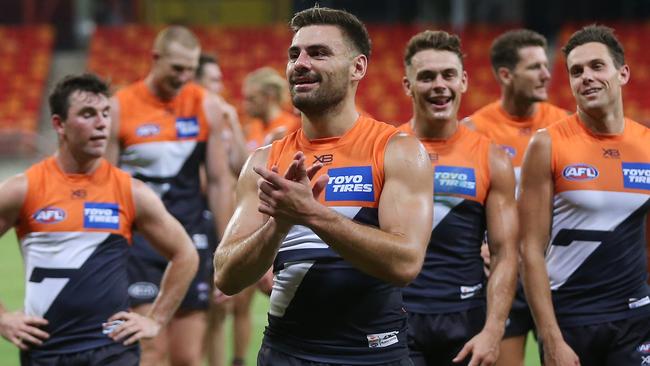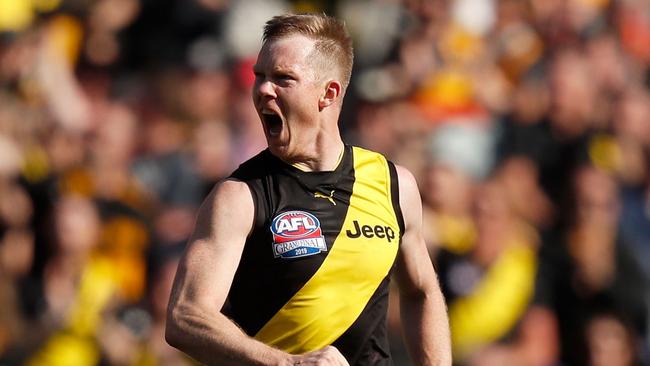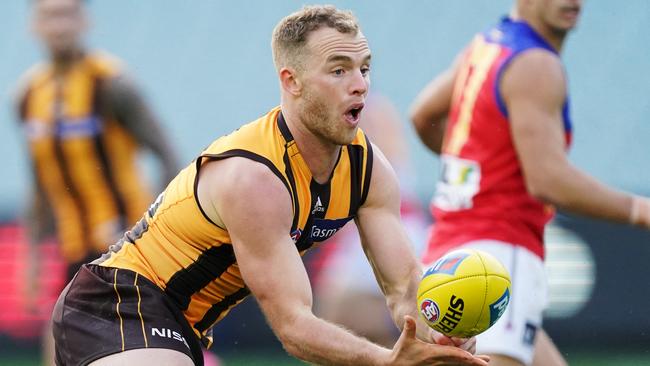Mick Malthouse revises his top eight predictions and looks at how the new-look 2020 season will affect your club
The 2020 season is no longer a marathon, it’s a sprint, and some clubs will thrive. Mick Malthouse has revisited his pre-season tips and made a few changes, and identifies the players he expects to fire in a year that’s far from normal.

Expert Opinion
Don't miss out on the headlines from Expert Opinion. Followed categories will be added to My News.
It’s been a long time since Round 1 and it feels a bit like nothing has changed, yet everything has changed.
It also feels like the small unknowns of this season will become the biggest factors in determining where your club finishes.
And it’s why I’ve changed my initial predicted final top eight, and who gets the wooden spoon.
Let’s start with the hubs.
We’ve never had hubs in Australian rules football before and the worry for the coach down to the players of the clubs involved will be how well they handle the isolation.
West Coast, Fremantle, Port Adelaide and Adelaide will head to Queensland hubs.
Those still at home have tough quarantine laws to negotiate, including self-isolation and regular testing, but they are at least in familiar surrounds and with family.
While I don’t think it’s a big deal, I have been listening to others who are making it a big deal.
Perhaps it’s the uncertainty of the time frame — will it be just four weeks, or will continued border closures extend that time away from home?
Get your footy fix on KAYO ahead of live matches returning soon. Watch classic battles from the 60s to today, docos, news and more. New to Kayo? Get your 14-day free trial & start streaming instantly >

It’s a thought I would want my players to push to the back of their minds, because if it’s taking up space in the forefront of their brains then it will most likely have an adverse affect on their game.
I try not to get too involved publicly in politics, but I see the West Australian and South Australian governments’ border closures having a massive impact on the WA and SA teams. What if those clubs don’t get a run of home games in the second half of the season as predicted?
Even if they do it may be too late in a shortened season in which early wins are money in the bank and a slow start is like a bouncing cheque.
We used to think 12 wins would most likely get you into the finals. Now, in a 17-round season, nine or 10 wins will become the magic numbers.
Round 1, all those weeks ago, has already set half the competition up and left the other half at the starting gates.
A 17-game season will create a great divide.
A shorter-than-usual season favours ballistic, mature and experienced teams, those who boast strong depth.
Predictably, Collingwood, Richmond, Greater Western Sydney, Port Adelaide and West Coast look the goods after just one match.
SUBSCRIBE TO THE SACKED PODCAST HERE
I see those clubs dominating the season. There will be increased interest when these leading premiership candidates meet during the year.
A shorter season and shorter quarters will play into the hands of the league’s most ballistic-type players.
Those who can play multiple roles (generally mid and forward) and spring out of the gates. Gone will be the fear among those players of tiring at the end of a long quarter.
Dustin Martin, Jordan De Goey, Patrick Dangerfield, Tim Kelly and Toby Greene will be even harder to contain in a season suited perfectly to them.
READ MORE:
How Gillon McLachlan saved footy from coronavirus pandemic while working 18-hour days
Sacked: Gary Ayres lifts lid on his final days at Hawthorn, Geelong and Adelaide
The maturity factor will also come to the forefront. That’s a different set of players entirely. The bigger impact players who have tended to tail off in the second half of more recent seasons because of soreness, fatigue or injury.
Josh Kennedy (West Coast), Jack Riewoldt, Charlie Dixon and Tom Hawkins will all benefit from a longer break between seasons, as well as shorter games.
This again will serve the top teams well, with the ability to leave the mature and more explosive players on the ground for longer, and by using them in different roles. They won’t need to hold back knowing they are in for a sprint, not a marathon, each week.
Watch the divisions grow between the haves and the have nots as the top sides with greater talent and depth leap ahead of the pack.

On the subject of shorter quarters, I think reducing game time is unnecessary.
If we kept to 20-minute terms, and instead eliminated time-off for boundary throw-ins, ball-ups and kick-ins, we would end up with a similar playing time to 16-minute quarters without all of the time-wasting stoppages.
I initially had the Western Bulldogs in my top eight. But after a massive 52-point loss in Round 1 to Collingwood I can’t see them making up ground.
New captain Marcus Bontempelli looked like a fish out of water as a leader, overwhelmed by the strange occasion. He needs to get better.
Instead, I wonder if Hawthorn, with the addition of Tom Mitchell after a season’s layoff through injury, can strike back? It has an impressive balance of youth and maturity, and like other top sides, it can play the type of explosive football needed in a shorter season.
There are numerous other unknowns among the top-eight candidates.
Is Port Adelaide is a genuine contender? We haven’t seen enough yet to know.
What impact will the hubs have on West Coast? Are the Eagles as resilient as the New Zealand Warriors seem to be? An NRL club that has committed to at least five months away from home and has attacked it willingly.
Was last year just a flash in the pan for the Lions? Brisbane revealed its vulnerability after a gallant 2019 season by playing precious football in Round 1 and succumbing to a reinvigorated Hawthorn. Where does this leave it?
The shuffle to make the eight will come from Essendon, Geelong, Melbourne and St Kilda.
The Saints were disappointing in their Round 1 loss to North Melbourne.
Melbourne, too, in its loss to West Coast.
Geelong was smashed by GWS by 32 points. And Essendon, impressive early, lost its way before sneaking home against Fremantle.
The problem the Cats have with potentially playing more games at home is that they get used to the one odd-sized ground.
If finals are still played at the MCG, they will find themselves with little preparation for a wide field that does not suit their lack of pace.
Jack Steven, when he is fit to play, will energise Geelong’s midfield and boost its chances, particularly if Hawkins can have as much impact for the entire season as he had for the first half last year.

I am putting the Saints in the final eight because their recruiting was outstanding and added much needed class and pace to the team, which will hold them in good stead this season, even after a dismal first round.
But there is always a bolter, we just haven’t seen enough football to predict who it could be.
The last unknown is injuries. A short, mini pre-season will play a big role and injuries will be the result.
Lance Franklin has already been sidelined — again — but I hadn’t factored him into the season anyway.
He is long past his best and will only play a cameo role in his remaining years at Sydney.
After the Swans’ narrow victory over Adelaide in Round 1, I have given the unwanted honour of likely wooden spoon recipient to the Crows.
It will all unfold soon enough. Bring on Round 2!
Originally published as Mick Malthouse revises his top eight predictions and looks at how the new-look 2020 season will affect your club
